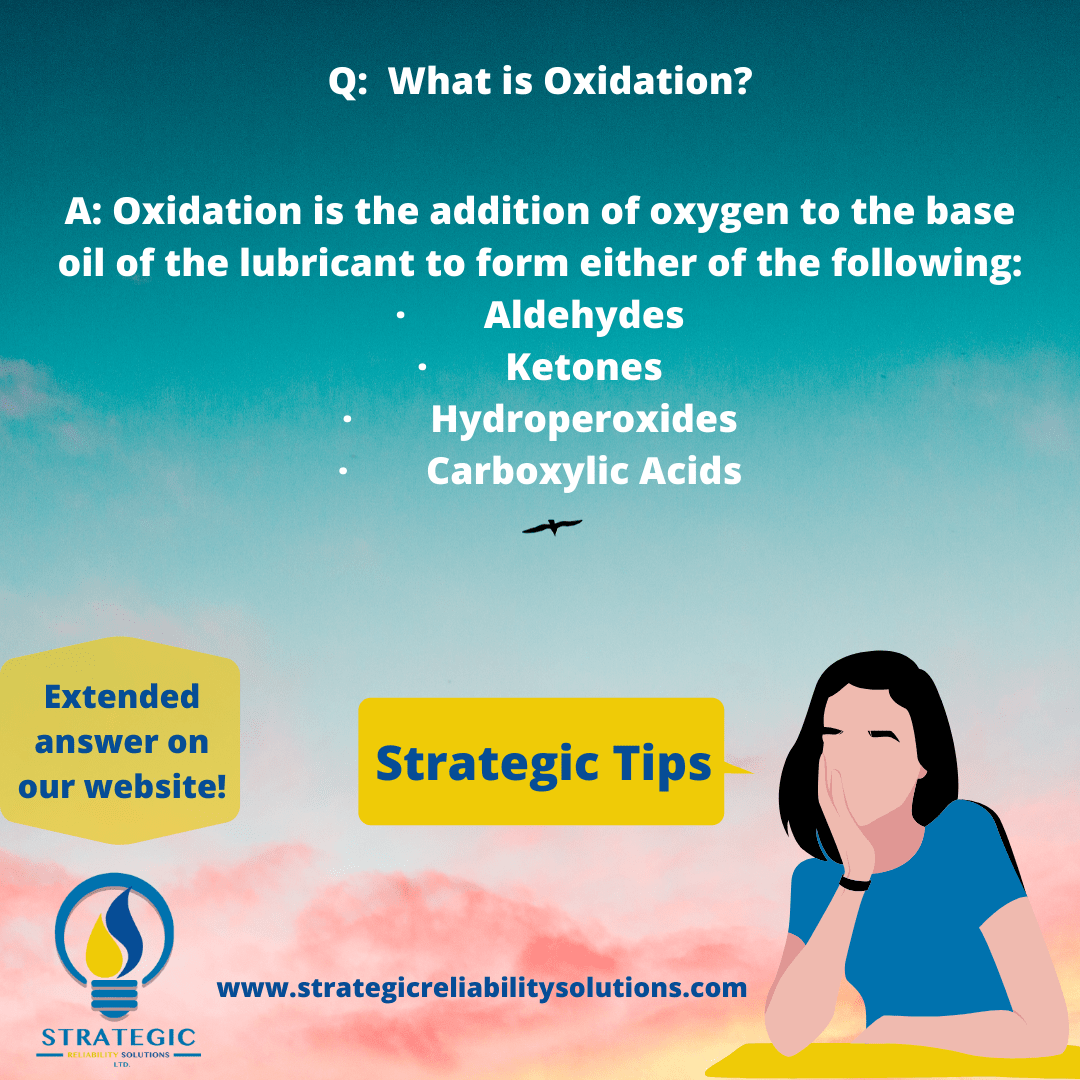
What is Oxidation?
One of the major types of oil degradation is Oxidation. But what is it exactly, as applied to a lubricant?
Oxidation is the addition of oxygen to the base oil of the lubricant to form either of the following:
- Aldehydes
- Ketones
- Hydroperoxides
- Carboxylic Acids
Wow… too many chemical names right?! These help to pinpoint the conditions responsible and then we can address them accordingly. Each of these by products are produced by different types of reactions or in some cases different stages of the oxidation process. It is key to note the type of by product as it gives us a clue to the root of the issue through which oxidation occurs.
For instance, the presence of Carboxylic acids can result in the formation of Primary Amides which can lead to heavy deposits. Early detection of the Carboxylic acids can help us prevent this. Once we determine the source of oxidation to produce the carboxylic acids, we can in turn remove this from the system.
Oxidation Stages
Oxidation does not happen in an instant. Usually, it follows a series of events which eventually lead to oxidation. Like any process in life, there are different stages for Oxidation:
- Initiation – Production of the free radical via the lubricant and catalyst.
- Propagation – Production of more free radicals via additional reactions
- Termination – Continuation of oxidation process after the antioxidants have been depleted or the antioxidant stops the oxidation process.

Results of Oxidation
Why is Oxidation bad for the lubricant? What can it ultimately result in?
Well, oxidation can result in the formation or lead up to the following:
- Varnish
- Loss of antifoaming properties
- Additive depletion
- Base oil breakdown
- Increase in viscosity
- Sludge
None of these are good for the lubricant!!!!!!!!! If you see any of these signs be sure to test for oxidation and identify the root cause for the introduction of oxygen in your system.

Oxidation Tests
Now that we know more about oxidation… what tests can be performed to prevent it?
There are 6 main tests that can be performed:
- RPVOT (Rotating Pressure Vessel Oxidation Test)
- RULER (Remaining Useful Life Evaluation Routine)
- MPC (Membrane Patch Calorimetry)
- FTIR (Fourier Transform Infrared)
- Colour (ASTM D1500)
- Acid Number (ASTM D974)
One must be careful in selecting which test to apply, this is heavily dependent on the type of lubricant and its application.
For instance, if we perform the RULER test and the antioxidant levels have depleted significantly, we can suspect that oxidation is occurring or has stopped. Charting the rate of antioxidant depletion, can determine the rate of oxidation. This can assist us to forecast the time remaining before antioxidants have been depleted and can no longer protect the base oil.



